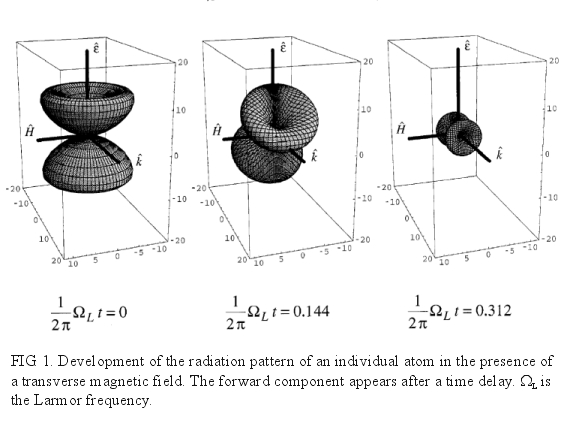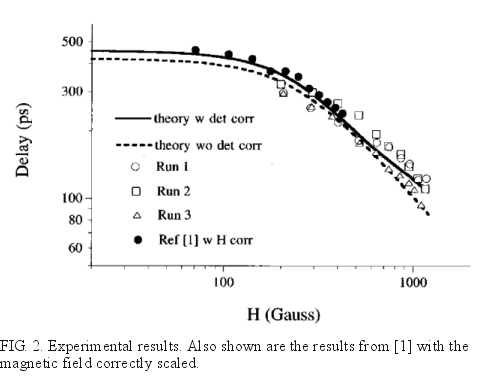Time-delayed second-harmonic
generation
Alexander Lvovsky, Sven
Hartmann
This is my first major independent project, resulted in a number of
publications. The main one is here.


In 1995, Brownell et al. [1] have observed time delayed second harmonic
(SH) generation. This experiment was performed by two-photon exciting the
6S1/2 - 6D3/2 transition in atomic cesium vapor,
in the presence of transverse magnetic field. It is known from symmetry
considerations that optical SH generation is impossible in gases unless
an external field is applied to break the symmetry. In this experiment
it was shown that even in the presence of such a field, immediately after
the two-photon laser excitation, the quadrupole radiation pattern has a
null in the forward (phase matched) direction and no second harmonic is
emitted. It takes time before the quadrupole moment, precessing around
the field direction, transforms itself in such a way that second harmonic
is enabled. The authors of [1] have demonstrated this time delay by measuring
the displacement of the SH signal oscilloscope trace with respect to that
of an undelayed signal.
Although the results obtained in [1] have clearly proven the presence
of the delay, they exhibited a number of puzzling features. For example,
the magnitude of the delay appeared to be more than a factor of two greater
than calculated. After taking over the lab, I have performed refined
measurements and analysis of SH generation in cesium vapor (Fig. 1, 2).
Besides having resolved the aforementioned discrepancy (which was a result
of eddy currents induced in the metal sample cell when subject to the pulsed
magnetic field), we have extended our measurements to the 6S1/2
- 6D5/2 transition, analyzed the effect of superfluorescence
on the development of SH, measured and explained the magnitude of the SH
signal and introduced a more precise technique of delay determination.
1. J. H. Brownell, X. Lu, and S. R. Hartmann, Phys. Rev. Lett. 75,
3657 (1995).

